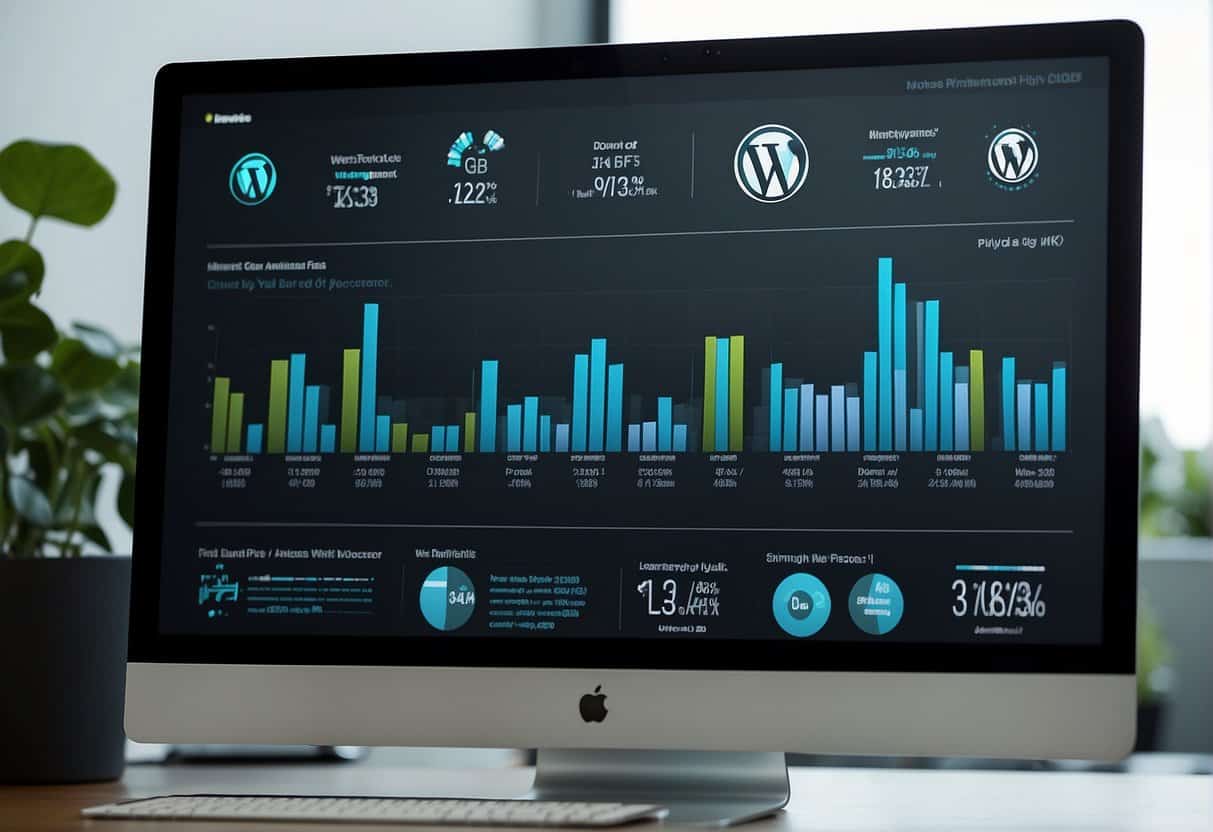
I took my foot off the gas when it came to my web business, Windhill Design. My focus had shifted to another industry and I was not giving my business the attention it needed.
When I finally gave it my attention again, my business profits had dropped to under $20,000 in 2016.
Growth by acquisition: First experiences
My first experience with growth by acquisition was back in 2013 when I contacted a local web firm to offer my services . It was a husband and wife team and, unfortunately, after the husband had passed away, his widow was no longer able to maintain the clients.
I offered to migrate the accounts and compensate her with an earn-out, paying her a portion of the revenue each month for a certain number of months. It worked out well for both of us. I picked up some new clients and she didn’t have to worry about supporting them anymore.
In early 2017, when I decided I wanted to grow my agency, I started reaching out to other web companies and was fortunate enough to find four in a span of about eight months. This was the beginning of my growth-by-acquisition education.
Acquisition #1: A strong start
My first acquisition in this series turned out to be the best. It was another small web design company in New Hampshire, where I’m based, and the owner was actively looking to hand over his clients.
Before I contacted him, he had been in discussion with another local firm, which didn’t work out.
This was a side career for him and so he had fewer than 40 clients in total, providing Joomla web design, maintenance, and hosting. I specialize in WordPress and wasn’t as familiar with Joomla but I decided that I could support those clients. What’s more, because it was local, I felt it would be a good fit.
The deal structure was $4,000 down as closing with an earn-out over 18 months. 50% of the gross revenue came from hosting and maintenance agreements, with another 30% on project-based work.
In total, I added about $35,000/year in gross revenue from this acquisition.
Key Takeaways from this experience
I really liked this seller from the start and we continue to be good friends. Having a good rapport and trust is the most important lesson. It helps when you are on the same page with regard to core values, ethics, and integrity. Even when there were some hiccups a few months later, he still took the time to help out because that is the kind of guy he is.
In addition to having a good relationship, I learned that if you need to migrate client services like web hosting, do that at the time of migration. For this transaction, I took over the hosting accounts with the current provider.
Acquisition #2: The learning curve
The second acquisition was with a firm in Connecticut. The owner had decided to focus on a specific vertical niche and wanted to spin out the clients that didn’t match that niche. There were about 100 clients from a range of industries, which were fairly local in nature.
The trailing 12-month revenue totaled about $36,000 in hosting and $46,000 in project-based work. I proposed three different valuations with a mix of an earnout and down payment and the seller selected the middle option.
The deal was: $30,000 down payment and a 12-month earn-out, 50% of recurring revenue, and 25% on project-based work.
So, what lessons did I learn from this one? As it turns out, quite a few:
Oversee handover practices
The seller was nice to interact with but aspects of his transition plan could have been better thought out. Instead of calls or emails, he decided to send one letter to let the customers know they had been transferred to a new service provider.
Unfortunately, not everyone read the letter or received it. I had to field several calls from people asking who Windhill Design was when they got their first invoice. The previous seller had physically mailed all the invoices, whereas we used a billing platform (WHMCS) to send them via email.
Consider price differences
There was a marked difference in the prices clients were paying when I took them over. Many were paying as little as $10/month, whereas my rate was $30/month, paid quarterly. We honored the existing pricing for a while but eventually had to standardize our rates to be fair to all customers. A few clients pushed back as I was raising hosting for them by 300%.
In retrospect, I should have come up with a more detailed transition plan with the seller. Informing the clients what changes they could expect over what timeline would have been a better approach before he stepped out of the picture.
Compare project-based vs recurring revenue
Project-based work does not have the same ongoing potential as recurring revenue. With this deal, I learned that project-based revenue like web redesigns and occasional maintenance was not nearly as predictable. At the end of the earn-out, while the recurring revenue had been fairly consistent, the project-based revenue was a mere 10% of the trailing 12 months. I would eventually get a positive return on this acquisition but it would take longer.
Watch out for Custom Content Management Systems
Be wary of a custom CMS. Most of these clients were on a 10-year, home-grown CMS. The seller kept telling me it would be easy for me to pick up and support.
To this day, I still have no clue how it works.
Thankfully, these sites didn’t break very often because I would have to subcontract his team to fix them. To make matters worse, as they were hardcoded, they could not be easily moved to a new server.
Location matters
Even though Connecticut wasn’t too far from New Hampshire, it wasn’t close enough for many customers. It didn’t help that the seller was still in the industry. He did honor the non-compete agreement we had, but even so, several customers who were unhappy with the new conditions reached out to him after the acquisition had gone through.

Acquisition #3: Worst-case scenario
This deal was smaller than the others. A web designer in upstate New York responded to one of my letters and said he no longer wanted to host websites. He enjoyed doing the design and build but didn’t want to deal with the headaches of hosting.
I said I’d be happy to host his customers and take on any future ones. In this case, because we were only providing hosting, I agreed to pay a flat rate of $250-$275 per hosting account as the batches were migrated over. Having learned from previous experiences, I requested that he inform the clients that I would be the new host and he would migrate accounts to my server.
He provided a list of about 60 clients all paying hosting between $30–$40/month. From my perspective, this was a great opportunity to add roughly $2,000/mo in recurring revenue with no upfront risk.
What could go wrong?
Turns out, plenty.
The beginning of the issues
Things went okay for the first batch of 15 accounts but then, around Christmas, I was having trouble getting updates from the seller. As with all my deals, I had offered to meet up in person several times but he kept postponing or canceling our meetings.
As per our agreement, I would pay as batches were moved over and the client paid the first invoice.
Everything was going as planned until the seller asked for an advance on a payment and then he stopped moving over accounts. Deadline after deadline was missed until I was forced to take it up with the fraud department to dispute the advanced payment.
I was hosting some accounts with no payment and eventually had to suspend a few accounts. That confused the clients. Some called him, some called me, and relations between me and the seller hit an all-time low. Shortly after, he tried to take many of the clients back and I only ended up with half the number of accounts I was originally promised.
Acquisition #4: Ongoing lessons
This deal was with another solo agency owner in upstate New York. He had about 30-40 clients and provided Joomla web design, development, hosting, and email services. He was leaving the industry and pursuing a career in another field.
Initially, our conversations didn’t lead anywhere but around the New Year, he reached out and seemed more motivated to come to terms. We agreed to $20,000 down and a nine-month earn-out, with 50% from recurring and 25% on project-based. I made a special effort to further protect myself from a botched transition. There was also a bonus payment at the end of the nine months, based on how many clients were still active at the time. If a client left, so did that part of the bonus. My goal was to create financial incentives to help transition the clients.
The seller drove six hours to meet me to close the deal. We completed the transaction in a Panera and he pushed all the client domains to my account. One thing I really liked about this deal was that he had many clients on maintenance plans. That made the recurring revenue much higher. Trailing 12-month revenue at the time of acquisition was $45,000 recurring/$17,000 one-time. In theory, this would have lowered my risk of attrition and, by now, we were well accustomed to working with Joomla.
What happened with this one?
The seller migrated all the accounts to new servers with his preferred host. All the websites were on a cPanel/Linux server and the email was on a dedicated Windows server running a third-party email program.
Not long after, I realized I wasn’t overly keen on his preferred host and migrated all the cPanel accounts to my own host, which wasn’t too much of a headache.
The issues really began when the seller failed to adhere to our agreement regarding transitioning clients. He also didn’t let me know about uncompleted projects where the deposits had been paid. This was further complicated by clients following outdated practices to collect credit card data, which needed to be addressed.
It was a reminder of how fragile the new client relationship can be. Without looking for it, these clients were now doing business with someone they’d never met who was telling them their payment info collection processes were unsafe.
Fortunately, I had built in enough fail-safes to our agreement that I didn’t end up paying too much for this batch of clients, but there were countless hours of unbilled time. And that’s without mentioning a $500 bill to an attorney when I discovered the seller had breached our agreement and I need to know my options.

Final breakdown
Even with the ups and downs, each of these deals worked out well in the black, financially speaking. The added revenue I was able to acquire helped me grow my profits from under $20,000 in 2016 to over $124,000 in 2018. The breakdown was as follows:
Acquisition #1: 483% ROI in 12 months
Acquisition #2: 55% of a down payment has been returned in 10 months
Acquisition #3: 178% ROI in 8 months
Acquisition #4: 98% of my down payment has been returned in six months
While there were certainly lessons learned — some harder than others — it was very educational. I’m glad I started with smaller deals instead of “going all in” and taking on debt for a larger deal right out of the gate. I learned that every transaction is going to be unique and I try to apply the lessons learned from earlier experiences to future ones.
It’s been a while since I have completed an acquisition but it’s not that I’ve given up looking. I still mail out letters and have calls with agency owners. I think the landscape has changed and I’ve become more selective. Maybe I’ve seen the cost of time and focus or I’ve become a little stricter with my investments. Regardless of what my next deal looks like, these experiences have undoubtedly been beneficial. I hope that by sharing them with others, it may help shorten the learning curve a bit.
Selling your digital agency? Here’s an 8-Step Framework for that.





